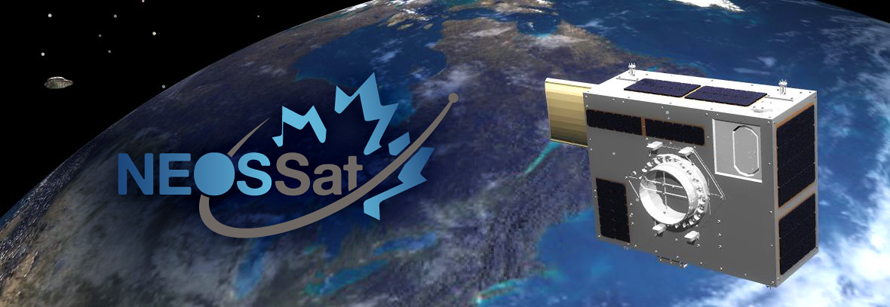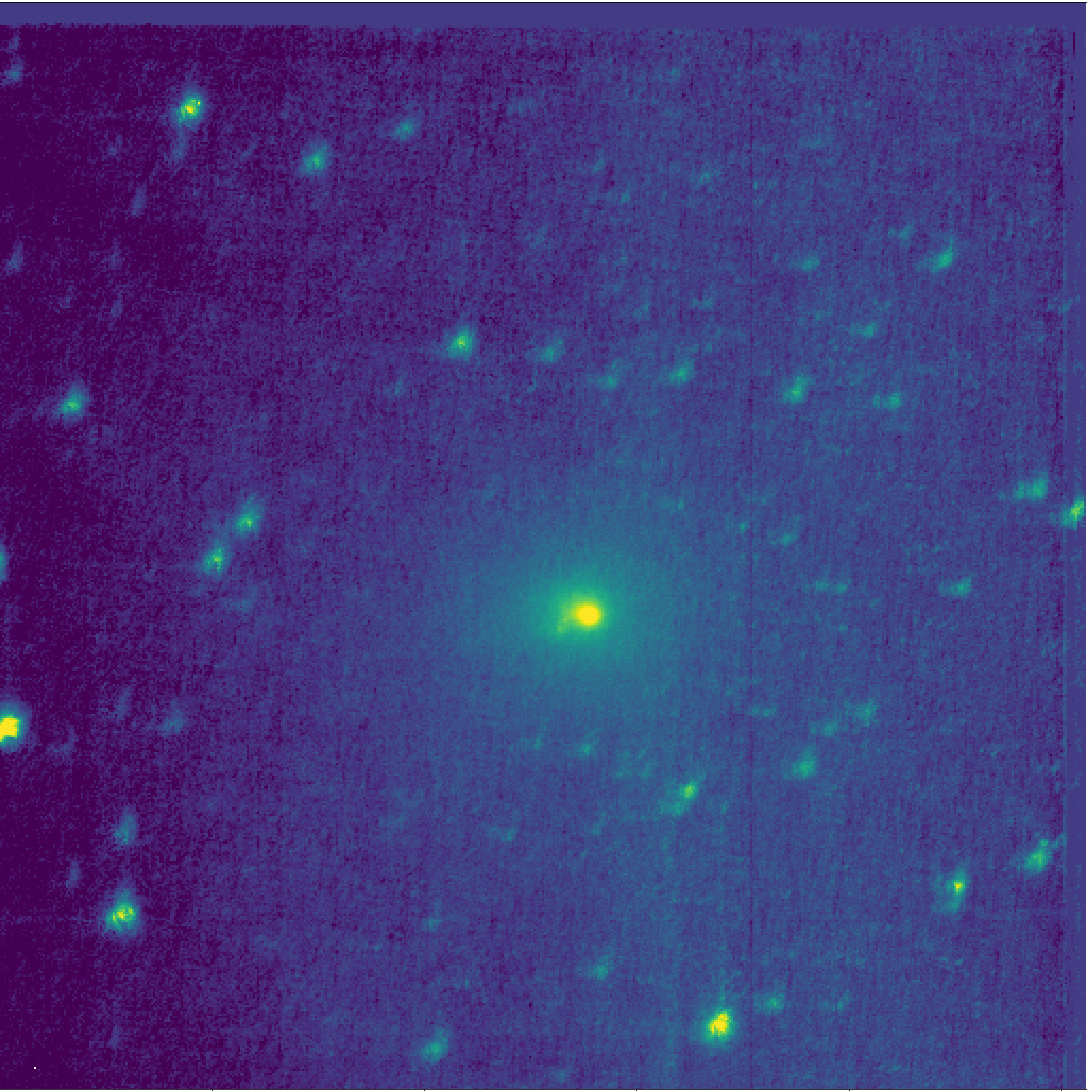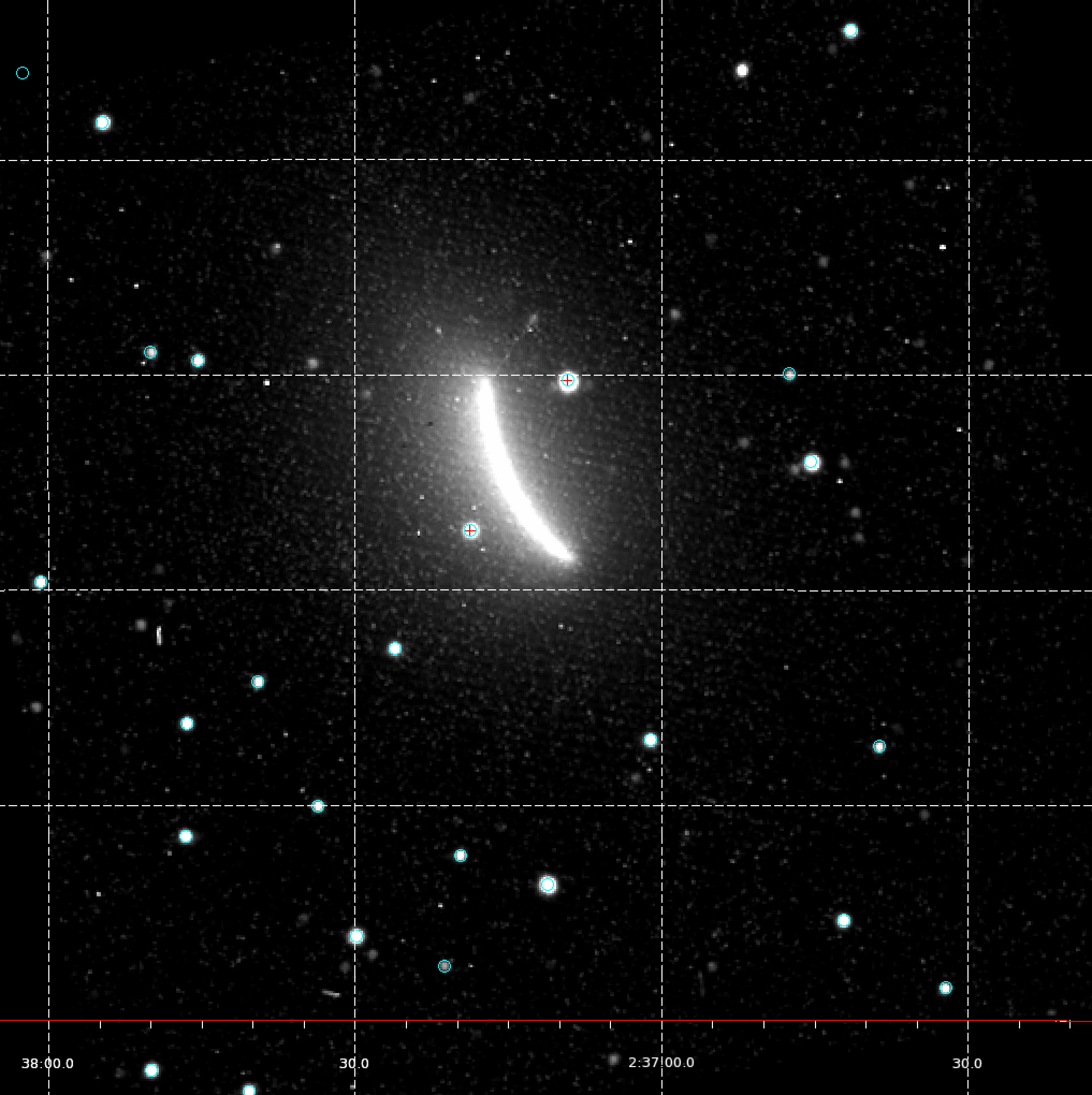
Expect NEOSSat Updates throughout the week as Comet 46P/Wirtanen approaches the Earth!
Last Updated: December 12
Canada’s Near Earth Object Surveillance Satellite (NEOSSat) closely monitored the nearby, short period comet 46P/Wirtanen from October 17 to December 2. The precise pointing and imaging capability of NEOSSat allowed researchers at Bishop's University and University of Victoria to create an animated sequence showing the motion of the comet against the background stars over the course of 46-days.
The comet has a coma (glow) due to gas and dust ejected from its surface due to solar heating. The comet’s motion against the background stars is due to its orbit around the Sun every 5.4 years. The tight arcs that the comet moves are due to parallax from NEOSSat's 800-km orbit while it flies around the Earth every 100 minutes. The snowstorm-like effect is due to energetic particles (radiation) from our Sun impacting NEOSSat’s camera when it flies through the South Atlantic Anomaly; a region where Earth's magnetic field is relatively weak allowing charged particles to stream into NEOSSat’s altitude. As the orbital path of 46P/Wirtanen brings it closer to the Sun and the Earth making the comet brighter and more active.

On December 16, 2018 the comet 46P/Wirtanen will pass within 12 million kilometres of the Earth, or roughly 30 times the Moon-Earth distance. At such a close distance, the comet could become bright enough to be seen with the naked eye for observers in the Northern Hemisphere. Continual observations from NEOSSat will enable astronomers to refine its orbit and monitor the variability of the comet as it passes through the Earth's backyard. NEOSSat Images will be used to monitor the brightness of 46P/Wirtanen and contribute astrometry to the IAU Minor Planet Center.
The NEOSSat mission is a joint endeavour between the Canadian Space Agency (CSA) and Defence Research and Development Canada (DRDC). Launched in 2013, the spacecraft houses a 15-cm optical telescope that has been recently re-engineered to enable long duration, stable pointing and accurate photometric measurements of astrophysical phenomena. These efforts have giving NEOSSat a new life and will allow Canadian scientists to study objects such as comets, asteroids and exoplanet hosting stars. The high-quality observations of 46P/Wirtanen by NEOSSat are a demonstration these new capabilities.
NEOSSat circles the globe every 100 minutes.
NEOSSat has completed more than 30 000 orbits since its launch on Feb 25, 2013.
NEOSSat has a large external baffle enabling it to point close to the Earth's limb.
Dec 12: Animation From observations acquired on December 12th (UTC). NEOSSat is slew tracking to follow the comet.
Dec 11: Animation From Observations acquired on December 2nd. Comet has clearly brightened. Parallax motion of comet is much more pronouced due to its proximity to the Earth.
David Balam, Principal Observer of the Victoria near_Earth Project, has been actively using NEOSSat to supply measurements to the IAU Minor Planet Center has shared his animations and image stacks:

The Government of Canada is committed to increasing the availability of scientific data and publications as part of its Open Government initiative. The Canadian Space Agency supports this objective by making scientific data available to researchers, students, industries and the public to encourage innovation and contribute to the advancement of knowledge.
NEOSSat astronomy imaging of comet 46P are available from the CSA FTP Site:
ftp://ftp.asc-csa.gc.ca/users/OpenData_DonneesOuvertes/pub/NEOSSAT/ASTRO/2018/